
Divers Find Deepest Known Shipwreck USS Johnston
.The World War II Fletcher-class destroyer USS Johnston (DD 557) was lost at the Battle off Samar, part of the Battle of Leyte Gulf, on October 25, 1944. Just 141 of the ship's 327 crew members survived.The wreck was originally discovered on the edge of an undersea cliff in October 2019 by the late Paul Allen’s Vulcan Inc. and vessel R/V Petrel under the leadership of renowned ocean wreck explorer Robert Kraft. On that expedition, film of pieces of the vessel were taken by a remotely-operated vehicle (ROV), but the majority of the wreck including its upright, intact forward two-thirds including
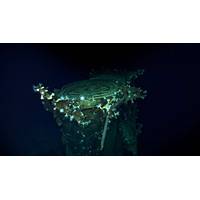
Sunken Japanese Carrier Discovered
it. Of the crew members on board, 814 were killed as a result of the battle.Along with Kaga, three other Japanese fleet carriers – Akagi, Sōryū and Hiryū – were sunk during the battle.The crew aboard R/V Petrel, a high-tech research vessel owned by the estate of late Microsoft co-founder Paul Allen, spent several weeks surveying the massive area, documenting more than 500 square nautical miles, all within the Papahanaumokuakea Marine National Monument.“This project is significantly different from previous missions as it required a level of investigation, analysis and survey of a carrier-base
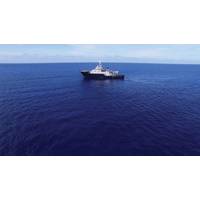
Wreckage of USS Wasp CV-7 Discovered
Japanese submarine I-19 while escorting transports carrying the Seventh Marine Regiment to Guadalcanal as reinforcements. Of the 2,162 on board, 176 were killed as a result of the attack. The sunken aircraft carrier was found in the Coral Sea, 4,200 meters (nearly 14,000 feet) below the surface.“Paul Allen’s passion for U.S. history lives on through these missions. He was dedicated to honoring the brave men who fought for our country,” said Robert Kraft, director of subsea operations for Vulcan Inc. “Paired with the discovery of USS Hornet announced in February, we’re excited

Microsoft Co-founder Paul Allen Dies at 65
Paul G. Allen, co-founder of Microsoft and noted technologist and philanthropist, died on Monday afternoon from complications of non-Hodgkin’s lymphoma, Vulcan Inc. announced today. He was 65 years old.“My brother was a remarkable individual on every level. While most knew Paul Allen as a technologist and philanthropist, for us he was a much loved brother and uncle, and an exceptional friend,” said Paul’s sister, Jody Allen, in a statement.“Paul’s family and friends were blessed to experience his wit, warmth, his generosity and deep concern. For all the demands on
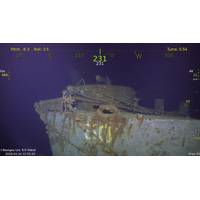
Paul Allen’s Crew Finds Another Historic Shipwreck
The USS Helena (CL 50) is the latest in a string of historic shipwrecks discovered by Paul G. Allen’s expedition crew aboard the state-of-the-art research vessel Petrel.The U.S. Navy's storied St. Louis-class light cruiser began her World War II service at Pearl Harbor and took part in three significant battles during the Solomon Islands campaign before being sunk by Japanese torpedoes on July 6, 1943, during the Battle of Kula Gulf. All but 168 of Helena’s 900 crew survived the sinking and eventual rescue.Allen's team found the wreck 860 meters below the surface in the New Georgia
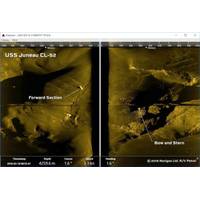
EdgeTech Sonar Utilized in USS Juneau Discovery
EdgeTech, developer of high resolution sonar imaging systems and underwater technology, said its side scan sonar technology was used in another very noteworthy underwater find. Just weeks after locating the USS Lexington, the research vessel Petrel and Paul Allen’s team has located the sunken remains of the USS Juneau. The USS Juneau, a US Navy light cruiser, was sunk in November 1942 during World War II. Located in over 4,000 meters of water the historic vessel can be seen in this very clear, low-noise EdgeTech 2205 sonar image. The amazing image shows the large 2 kilometer
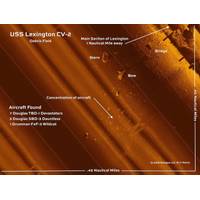
EdgeTech Sonar Utilized in Search of the USS Lexington
EdgeTech, a leader in high resolution sonar imaging systems and underwater technology, was recently honored to learn that it’s industry leading side scan sonar technology was once again used by the Research Vessel Petrel and Paul Allen’s talented team in the discovery of the USS Lexington. The USS Lexington, one of the first aircraft carriers built and commissioned by the United States of America, was sunk during the Battle of the Coral Sea in 1942 off the coast of Australia. The wreckage was discovered in approximately 3,000 meters of water. EdgeTech side scan sonar systems
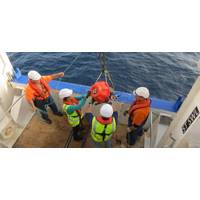
NOAA Teams up with Paul Allen for Deep Ocean Observation
;s research vessel R/V Petrel will deploy an array of these floats in the deep international waters east of Brazil. “This is NOAA’s first formal public-private partnership for sustained ocean observations,” said acting NOAA Chief Scientist Craig McLean. “We applaud Paul Allen for his visionary investment in long term knowledge to help answer some of Earth’s most challenging questions.” NOAA chose the western South Atlantic for the array because it provides a window into the global thermohaline circulation, called the great ocean conveyor belt, which

The AUV That Helped Find USS Indianapolis
A team of civilian researchers led Microsoft co-founder Paul Allen have found the wreck of the World War II heavy cruiser USS Indianapolis (CA 35), lost July 30, 1945. Aiding Allen’s team in the discovery was a 6,000-meter-rated autonomous underwater vehicle (AUV), the REMUS 6000, manufactured by Kongsberg Maritime subsidiary Hydroid Inc., which gathered the sonar data that helped locate the USS Indianapolis, 72 years after it was torpedoed and sunk by the Japanese Navy near the end of World War II. The wreckage was found on August 19, sitting 5,500 meters below the surface in
 February 2025
February 2025





